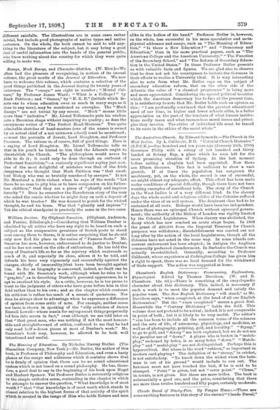The Australian Church. By Edward Symonds. — The Church in the West
Indies. By A. Caldecott, B.D. "Colonial Church Histories." (S.P.C.B.)—One hundred and ten years ago (January 20th, MS) Governor Philip with a colony of ten hundred and thirty landed at Botany Bay, a place which he soon left for tho more promising situation of Sydney. At the last moment before sailing a chaplain had been appointed. Now there are fifteen dioceses. This fact is sufficient to show a vast growth. If at times the population has outgrown the machinery, yet, on the whole, the record is one of successful, we might almost say adequate, effort. This effort has been made under conditions of special difficulty, though there have not been wanting examples of munificent help. The story of the Church in the West Indies is of a very different kind. In the slavery days the whole social and religious edifice of the Colonies suffered under the vices of an evil system. The dominant class had to be sustained at all costs. Bishops would have been too independent. Hence there was an episcopal Church without episcopal govern- ment; the authority of the Bishop of London was rigidly limited by the Colonial Legislatures. When slavery was abolished, the decay which has now reached an acute stage began. In 1868 the grant of £20,000 from the Imperial Treasury for Church purposes was withdrawn ; disestablishment was carried out not long after by the action of the local Legislatures, though all the Colonies have not acted in the same way. In some islands con- current endowment has been adopted ; in Antigua the Anglican community preferred disendowment. In Barbados the Church was actually re-established. Generally, according to Professor Caldecott, whose experience at Codrington College has given him a right to speak, there was no local demand for the withdrawal of State support. The action was suggested at home.


































 Previous page
Previous page